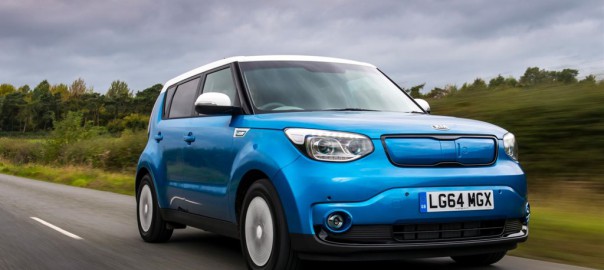Smooth, refined and responsive, but some way behind the new EV models from Mercedes-Benz and Volkswagen in nearly all areas
What is it?
This is Kia’s first production electric vehicle, based on the familiar high-roofed Soul hatchback. Like all other Kia models, the Soul EV will get the same seven-year warranty which is a market first for battery-powered vehicles and should help reassure potential purchasers.
In the conversion to battery power, the core of the Soul – the conventional internal combustion engines, transmission and heating system – have all been dumped, the front and rear styling revamped and the structure reworked.
While the upper body structure is carried over, it has been further beefed up with extra strengthening in the B-pillars and sills. Five extra crossmembers have also been bolted across the floorpan to increasing the rigidity of the bodyshell by 27 per cent.
The Soul EV also gets a restyled front end and a plastic insert in the grille space, which opens up to revealed the twin charging sockets. The rear bumper and tailgate have also been restyled and LED rear lights have been added.
Inside, the dash is all new and built of higher-quality materials than the conventional models. The EV version gets OLED digital instruments, a large centre touch screen, a rather shapely steering wheel and a new shift lever and surround.
The 27kWh lithium ion polymer battery pack is packaged under the floorpan. Charging from a UK domestic socket could take up to 13 hours. Kia UK is, however, suppling owners with a wallbox charger, which should reduce charging time to around five hours. It is also fitted with a Japanese-standard Chademo fast-charging socket, which can deliver an 80 per cent charge in 33 minutes.
Kia engineers created a new low-energy heating and ventilations system based on the heat pump principle which also allows heating and ventilation to be restricted to just the driver, saving energy.
The 109bhp, 210lb ft electric motor drives a single-speed transmission and Kia claims a 0-60mph time of 10.8sec and a top speed of 90mph. The combination of the polymer battery cells and the new heating system will stretch the potential driving range out to 132 miles.
What is it like?
While the Soul EV delivers the typically compelling electric car dynamic of smooth and torquey performance and a quiet cabin, the whole package feels somewhat dated.
Had this car been launched three years ago, it would have been easily class-competitive with the Nissan Leaf. But the world of the EV has moved on rapidly and the new Volkswagen e-Golf and Mercedes-Benz B-Class Electric Drive are better cars than the Soul EV.
The two German models feel more refined both in terms of cabin ambience and ride quality, the drivetrains perform better and both cars have far superior handling.
The cartoonish looks might, of course, not matter to many potential buyers, but the clinching argument is that the entry-level VW e-Golf is only just over £1000 more than the Soul EV; the B-Class Electric Drive costs around £2000 more, and the excellent BMW i3 only a few hundred pounds more.
That’s not to say the Soul EV has nothing going for it; quite the opposite, in fact. In addition to its EV driving and performance traits, the lofty driving position and boxy styling make it easy to position in busy city-centre traffic.
Should I buy one?
If you are going to buy an electric car, it would be hard to find a compelling argument for the Soul over rival models. It does everything pretty well, aside from suffering a somewhat disturbed ride on poor roads, but is short of EV class leadership.
Kia has modest sales targets for the Soul EV, with next year’s sales tipped to be 100-200 units, the cars only being sold through a select 13 dealers who applied. Despite the £24,995 price (including government grant, battery pack, wall charger, Chargemaster account and generous standard spec), Renault’s Zoe and the Nissan Leaf also benefit from buying packages that make EV ownership even more affordable.
As it stands, the Soul EV, as competent as it is, is neither the best to drive nor the best value.
Source: Autocar
